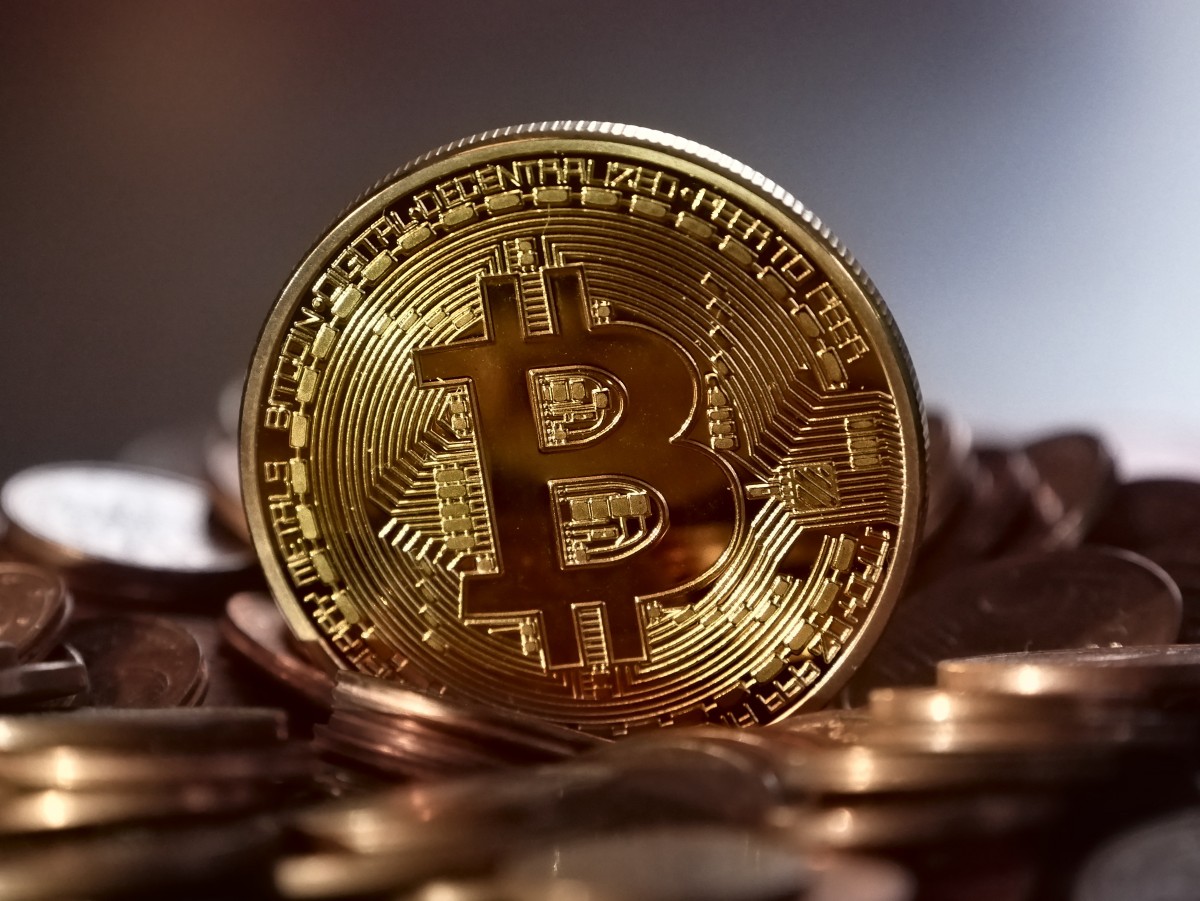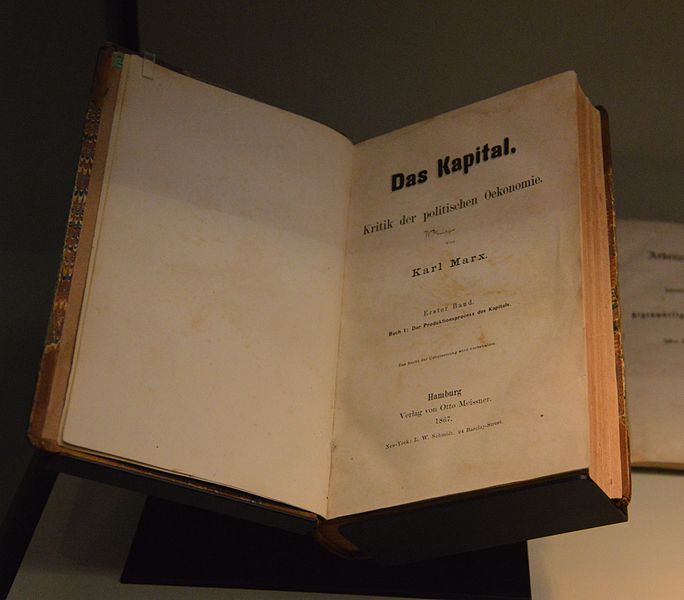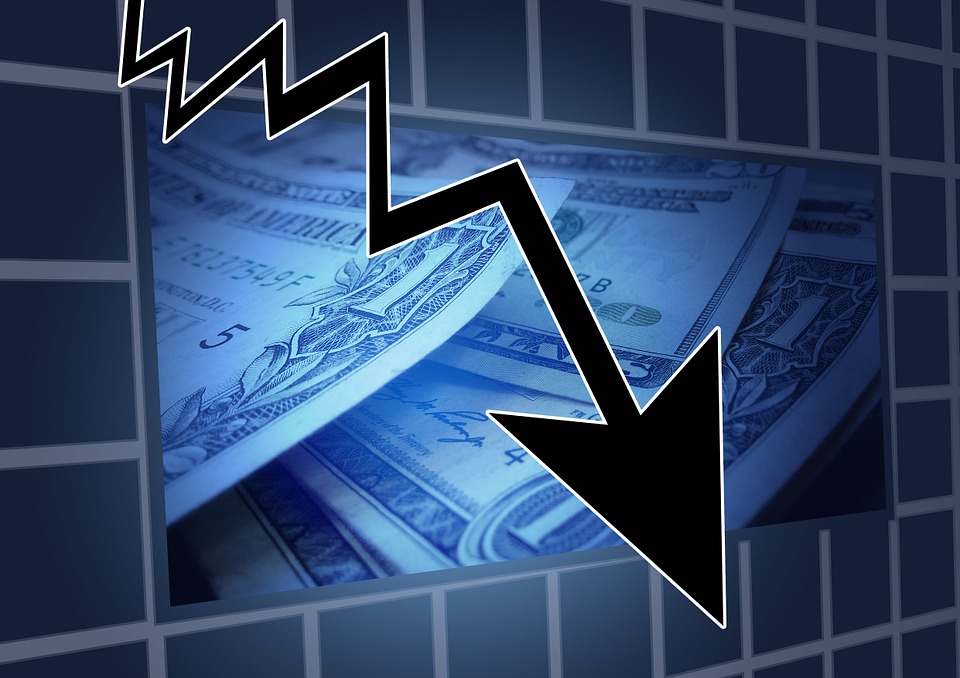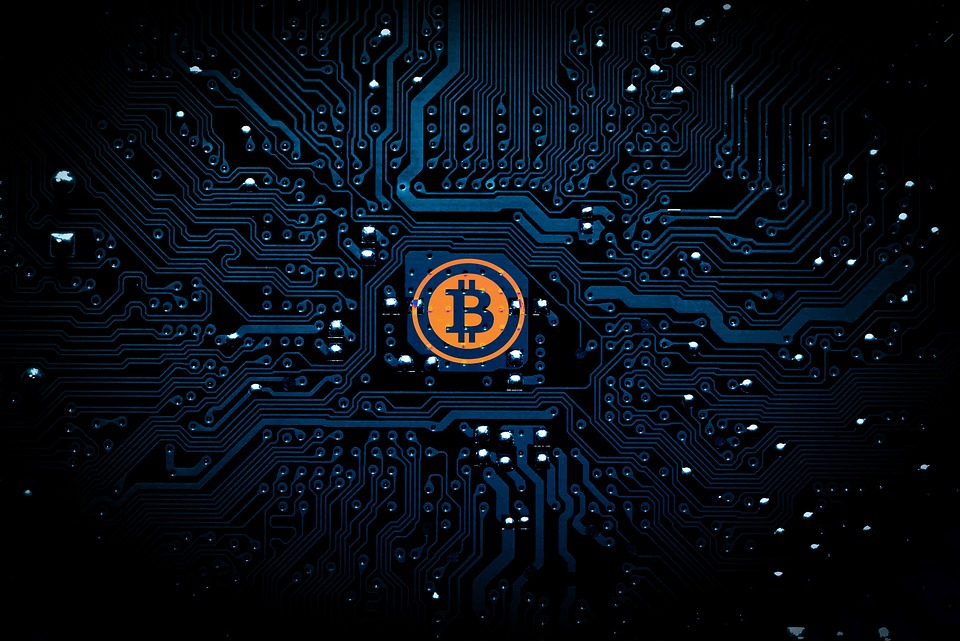This article, written for Socialist Appeal, was published a matter of days before Bitcoin's value collapsed by half overnight. This catastrophic downturn proves everything we have written about Bitcoin and how it reflects of the general crisis of capitalism.
As most families prepared for the usual festive traditions this winter, investors were panicking. In the week leading up to Christmas, the price of Bitcoin plunged by almost a third. Billions of dollars were lost in a matter days, or even hours.
The digital currency’s price quickly recovered and the merriment continued. But this week saw another plunge, as markets reacted to news that South Korea is the latest country planning to ban trading of Bitcoin and other similar ‘cryptocurrencies’. US$100 billion was wiped off the collective value of all cryptocurrencies, with the price of Bitcoin alone plummeting by 14%.
 Bitcoin has now halved its value / Image: CSTRSK
Bitcoin has now halved its value / Image: CSTRSK
And yet such erratic behaviour has seemingly become the norm in the turbulent world of cryptocurrencies. Falls of 30% or more in the price of Bitcoin were seen six times in the course of 2017. Comparisons to the Dutch tulip bulb mania and South Sea Company crash are rife. Not a day goes by without another comment piece about the danger of a Bitcoin bubble.
There’s gold in them hills!
The widespread concern amongst commentators and investors alike is based on justifiable fears. The cryptocurrency craze displays all the hallmarks of previous bubbles. Erratic movements in price. A proliferation of imitators seeking to jump on the bandwagon. And even celebrity endorsements of new offerings (Paris Hilton and boxer Floyd Mayweather are amongst the famous figures who have endorsed various new currencies).
Between 1st January and 31st December of 2017, Bitcoin - the nearest to a household name when it comes to digital currencies - saw a price rise of over 1,400%. This is in addition to a doubling in price during 2016. At the time of writing, the cost of one Bitcoin is around US$14,000 (although this may well have changed dramatically by the time you read this). Seven years ago, this figure was around one dollar.
Nobody is in any doubt about the cause of this meteoric rise in the price of Bitcoin and similar decentralised currencies based on the ‘blockchain’ technology: speculation.
“In my view,” stated Mark Tinker, a fund manager at Axa Investment Managers, in an email to his clients, “the mania for raising funding via the blockchain has all the aspects of a classic bubble, including a lot of schemes that would make the original South Sea Bubble operators blush.”
And like any speculative orgy, everyone is trying to get in on the act before the party stops. ‘FOMO’ (fear of missing out) reigns.
There are now 39 digital currencies with an estimated valuation of over $1 billion - and hundreds more beside. Bitcoin tops the pile, accounting for approximately one-third of the $710bn cryptocurrency market. The first half of 2017 alone saw $1.2 billion raised in ‘initial coin offerings’ (ICOs) - a form of crowdfunding for cryptocurrency startups - as investors sought to get in early on the latest potential Bitcoin successor.
One wry pseudo-entrepreneur even founded the “Useless Ethereum Token” (UET), promising “the world’s first 100% honest ICO”. “You’re literally giving your money to someone on the internet and getting completely useless tokens in return,” the creator wrote on the UET’s website. “There are no ‘whitepapers’, no ‘products’, and no ‘experts’. It’s just you, me, your hard-earned Ether, and my shopping list.”
Despite the evident sarcasm, the plucky tycoon reported that the UET offering raised $200,000 - conclusive proof that satire is indeed dead.
If it looks like a bubble and smells like a bubble…
Of course, investors are constantly seeking to make a quick profit. This is the name of the game when it comes to capitalism. As Marx explained in his economic writings, the goal of the capitalist, ultimately, is to make money out of money. Whether something socially useful is produced in the process is accidental (from the perspective of the capitalist).
Intrinsic to the capitalist system is the banking and credit system. The role of the banks and financial institutions is turn all money into capital - that is, into money that can generate a profit. The small, isolated savings of many individuals are lumped together and placed in the hands of the investment bankers. The stock market and various financial instruments, in turn, are used as a means to channel this money back into the real economy - be it households, businesses, or governments.
In the process, all sorts of ‘fictitious capital’ is created: profits derived not from real production, but from financial alchemy. Although parasitic, most of this financial activity at least has some link back to the actual economy. Stocks, for example, are a claim on the future profits of a company. Government bonds, meanwhile, are a claim on a nation’s future tax income.
In the case of cryptocurrencies, however, even this semblance of an economic anchor is missing. Pretty much the only thing determining the rising price of Bitcoin, for example, is the expectation amongst investors that it will be even bigger tomorrow. This is the classic characteristic of a bubble.
“I think it looks like a bubble, smells like a bubble, acts like a bubble, and feels like a bubble,” asserted Shmuel Hauser, director of the Israeli Securities Agency, explaining why the watchdog was seeking to regulate the digital currency market.
What is Bitcoin?
Bitcoin - the first mainstream digital currency - initially hit the headlines in 2009 when it was officially launched. It was heralded by its supporters as a revolution in money, with cryptocurrency enthusiasts lauding its decentralised design. Bitcoin was well-received, above all, by anarcho-libertarian types, who hoped that it would be a form of money beyond the reach of governments and central banks; an alternative to fiat currencies - that is, money backed by a state.
 Bitcoin is a digital, decentralised currency / Image: public domain
Bitcoin is a digital, decentralised currency / Image: public domain
This decentralisation was made possible by Bitcoin’s design, based on a proposal made in an online paper written by the mysterious Satoshi Nakamoto (presumed to be a pseudonym for an unknown individual or collection of coders).
Behind Bitcoin lies a novel technology called the “blockchain”. This is a form of peer-to-peer network, or distributed electronic ledger, which digitally details every exchange ever conducted with Bitcoin. Whenever a transaction using Bitcoin is made, nothing tangible is ever exchanged. Instead, the distributed ledger is simply updated, providing an indelible history of Bitcoin transactions.
The difference between this and, say, online banking, is that in the Bitcoin network every user has a copy of this ledger. Furthermore, new Bitcoins cannot be centrally created, but must be ‘mined’ - generated by users who perform complex (but entirely pointless) computational tasks. And, unlike fiat currencies, there is a maximum number of Bitcoin that can ever be put into circulation (21 million to be precise).
The result is that Bitcoin - and other similar digital currencies - are designed to be entirely anonymous and secure, beyond the reach of middlemen, governments, and central banks. In a world where hundreds of billions have been artificially pumped into the world economy through quantitative easing programmes, cryptocurrencies seemingly offer a solution to “state meddling” with the money system.
What is money?
But, speculative activity aside, what economic function has Bitcoin fulfilled in reality? As we have written previously, cryptocurrencies have largely failed to play any real role as an alternative to traditional money. Simply put, digital currencies like Bitcoin do not possess the basic qualities required of money.
At root, as we have outlined elsewhere, money is a social relation; a claim to a portion of the total social wealth. It arises historically, not by design, but as a result of the development of commodity production and exchange.

Marx explained that money serves several functions:
- As a unit of account, or measure of value. Value, in turn, expresses the relative amount of socially necessary labour time contained within different commodities. In money terms, this is represented by prices.
- As a medium of exchange. In this role, money breaks up the circulation of commodities into two separate acts: an act of sale (C-M, a commodity exchanged for money); and an act of purchase (M-C, money exchanged for a different commodity).
- As a store of value, allowing accumulated wealth to be maintained and preserved over time.
- And as a means of payment, allowing debts (denominated in a certain currency) to be settled and taxes to be paid.
Looking at the above, it becomes clear why cryptocurrencies have failed to take hold as a genuine alternative to modern fiat currencies (e.g. the dollar or euro).
Above all, the volatile price of Bitcoin - driven by speculative activity - means that it cannot act as a reliable unit of account, medium of exchange, store of value, or means of payment.
Imagine placing your savings in Bitcoin, only to see them depreciate in value by one-third overnight. Or taking out a mortgage denominated in Bitcoin: by the end of 2017, your debt to the bank would be 14 times larger than at the beginning of the year!
And what shop would accept a currency whose value was fluctuating by the hour? Shopkeepers would be spending all their time sticking new prices on the shelves! No wonder Bitcoin’s actual use as money has largely been confined to the shadowy fringes of the internet, where its ability to provide anonymity provides a useful means for online drug shopping.
Money’s evolution
Historically, precious metals arose as the first forms of tangible money; money as a medium of exchange. This is because of their physical qualities. Gold, for example, is uniform, durable, and divisible. Importantly, it also has a high value density, concentrating large amounts of labour time into a relatively small volume.
In time, gold and silver were replaced by paper notes - tokens of value. And in order to ensure that the value represented by these tokens was real and steady, their supply was restricted and their price was tied to the value of gold.
But even this gold standard eventually fell apart. Contradictions in the global economy built up, bursting to the surface with the First World War and later the Great Depression. Economic tensions between nations grew. And different countries were forced off the gold standard, one after another, as they attempted to provide liquidity to their failing banks.
The Bretton Woods agreement attempted to provide an alternative to the international monetary system, with currencies tied to the dollar. This too later collapsed, due to the slowdown of the post-war boom and the beginnings of a worldwide crisis of capitalism. The result was the system of floating currencies that we see today. The value of currencies is determined by the market (reflecting the strength of a nation’s economy), and central banks attempt to control the money supply through interest rates and the minting and printing of new money.
Ultimately it is this centralised control that allows the modern money system to carry on ticking over. Backed by the state, people trust that traditional (fiat) currencies will be accepted; that debts will be repaid; and that the money in circulation is economically anchored, representing real value.
The limits of cryptocurrency
Libertarian hopes of using cryptocurrencies to free money from the hands of the state are doomed to failure. At root, this is because such utopian dreamers do not understand why money arises historically, and how it has developed over time.
As we have explained elsewhere and above, money was not imposed on society by any force from above. Money, ultimately, is a social tool - like language - that arises out of the needs of production; from the needs of a market-based system of commodity production and exchange. Money cannot be ‘abolished’; it must ‘wither away’ on the basis of replacing commodity production and exchange with a democratic and collective economic plan.
Like Bitcoin, gold (and the gold standard) has historically appealed to libertarian types. They see the gold standard as a means of anchoring currencies, placing the money supply beyond the caprices of governments and central banks. Unlike fiat currencies, which can be debased and devalued by over-zealous note printing, gold is a reliable store of value.
But to advocate digital currencies as an alternative to traditional money, in this respect, puts the cart before the horse. Loose monetary policy is not responsible for economic crises, but the result of them. As outlined above, for example, governments did not abandon the gold standard and resort to inflationary policies simply on a whim. Rather, they were attempting to respond to a deep global economic crisis, within the confines of capitalism and the nation state.
Similarly, it is interesting to note that the Bitcoin community is also undergoing its very own schism. This “civil war”, as one commentator put it, reflects precisely the contradictory pressures within any monetary system that digital currencies were invented to overcome.
On the one hand, there is a need to increase the money supply (or its velocity of circulation, as is the case with the current Bitcoin split), in order to keep up with the demands of an expanding market of growing transactions. On the other hand, there is a need to prevent the money supply becoming divorced from the real economy that it is meant to represent.
Elsewhere, Bitcoin and its ilk are praised by supporters for their distributed control. But for all the talk of ‘decentralisation’, the Bitcoin ‘network’ is in fact highly centralised. The mining of new Bitcoin, for example, is concentrated in the hands of a handful of giant trusts, known as ‘pools’.
81% of all mining is estimated to take place in China. This is due to the country’s cheap electricity, which is helpful for running the huge banks of computers required for solving the useless tasks that generate new Bitcoins. 8 out of 10 of the largest pools in the world are run from China, accounting for 75% of all mining capacity. (In fact, it was reported this week that the Chinese government is so concerned by this frivolous use of energy that they have moved to ban such mining altogether. This is in addition to an earlier government ban of ICOs and cryptocurrency exchanges.)
Importantly, the concentration of Bitcoin itself mirrors that of the concentration of wealth in society in general. According to one analysis, for example, 95% of Bitcoin are owned by just 4% of holders. Half of the total wealth held in the form of Bitcoin belong to just 1% of all Bitcoin users.
In short, the economic problems we see around us today - of instability and inequality - are not the result of central bank ‘meddling’, but of the anarchy of the market. This arises from the private ownership of the key levers of the economy. No amount of utopian experiments will help. We need a revolution.
A symptom of capitalism’s disease
Ultimately, the cryptocurrency crisis reflects the crisis of capitalism. At root, this is a crisis of overproduction. The forces of production come into conflict with the mode of production. Capitalism’s ability to produce outstrips the narrow limits of the market. In short, the working class cannot afford to buy back the glut of commodities that the system produces.
This crisis of overproduction expresses itself in saturated markets and ‘excess capacity’. There are no profitable avenues for the capitalists to invest in. Instead, cash piles up in the bank accounts of big business.
 Financial crash / Image: geralt
Financial crash / Image: geralt
Workers in all countries are receiving a smaller share of the economic pie. Wealth becomes ever-more concentrated in the hands of the few. But it is not profitable to invest this money into real production, so the rich elite throw it into speculative activity instead.
The volatile price of Bitcoin is therefore part of the same anarchic economic process that is driving the frothy stock market and pushing investors to pour billions into Silicon Valley ‘unicorns’. It is no different from the speculation in gold or art.
Mainstream commentators and economists praise the ‘recovery’ and hope for a reversal of the political maelstrom that has engulfed the liberal ‘centre-ground’ Establishment in the past few years. But the Bitcoin bubble is another symptom of the fact that none of the economic contradictions that led to the 2007-08 crash have been fundamentally resolved.
Some have suggested that a bursting of this bubble wouldn’t cause as much damage as the financial crisis, a decade ago. This was catalysed by the subprime mortgage scandal, which spread through the system as a result of the “financial weapons of mass destruction” (as Warren Buffett called them) created by the bankers for their own parasitic gain.
This hypothesis may be true. Due to the limitations outlined above, cryptocurrencies are not widely used. They are less integrated into the rest of the economy - and have less weight within the system - than, say, the housing market. (Although this is increasingly becoming less true, with cryptocurrency derivatives and futures markets now offered by some exchanges, alongside investment packages of digital currency bundles.)
But the bursting of the Bitcoin bubble will be a small pop compared to the almighty bang being prepared by the same general contradictions, tensions, and instability within the system. Europe’s banks are mired in bad debts. The Chinese government is looking to dampen their hyperactive and unruly credit network, with potentially explosive social effects. The threat of protectionism, meanwhile, is looming on the horizon.
Whichever way you look at it, a new global slump is being prepared. The capitalist system has reached an impasse. Socialism is the only alternative.

